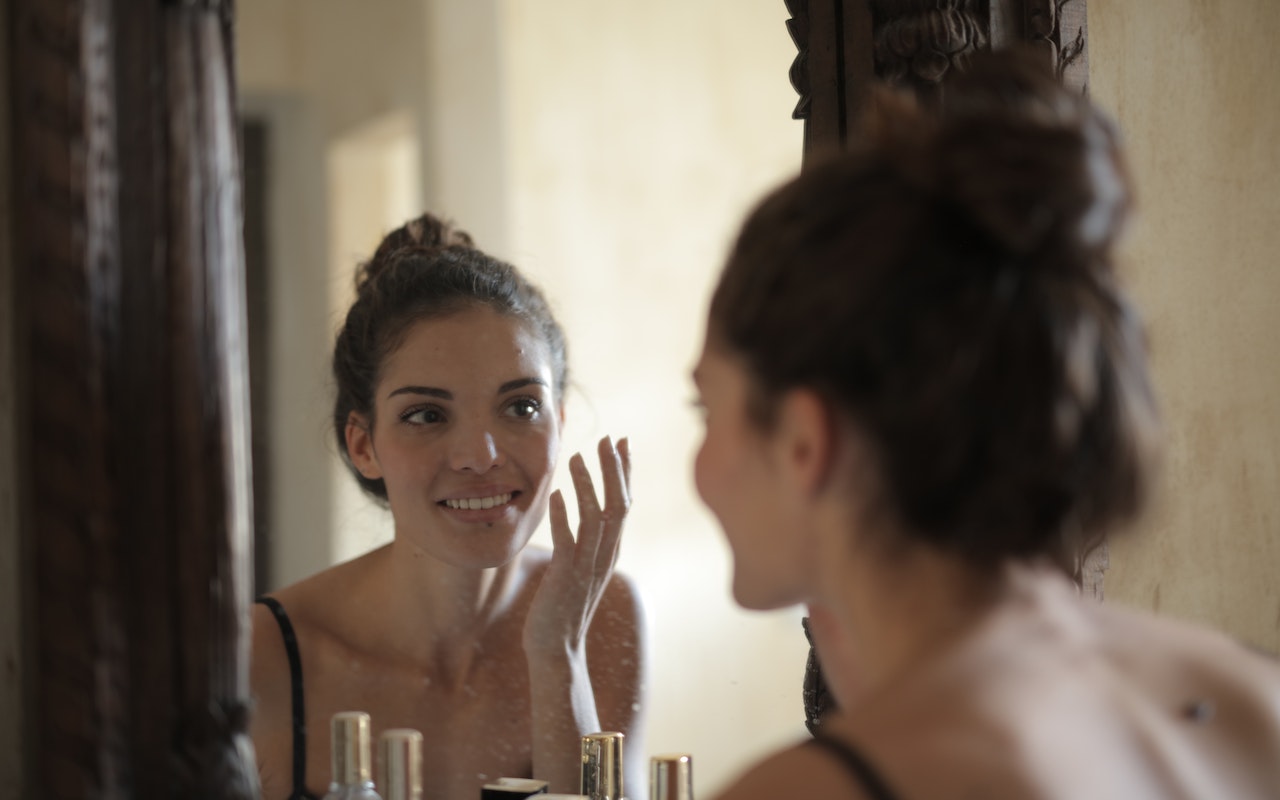We know how drastically the skin changes during our lifetime. From going through teenage acne to adult wrinkles, the skin has mechanisms to heal itself through time. Skin aging is a slow process that occurs from the late twenties and becomes more visible after the late 40s.
We may classify the skin aging factors as endogenous and exogenous. The internal health of the body causes endogenous factors. These may depend on genetics, gender, ethnicity, and overall health. Exogenous factors depend on the outside environment, like the sun's UV rays, pollution and harsh weather.
Some of these may be avoided; however, aging is inevitable. Keep reading as we discuss these aging factors and how to fight them with red light photobiomodulation.
Various Aging Factors
Aging is a complex process that is influenced by a unique combination of internal and external factors. Internal factors include genetics. These play a significant role in determining an individual's predisposition to aging-related changes. DNA damage, mutations, and cellular senescence contribute to aging at the molecular level. Hormonal changes may also impact aging.
External factors are environmental influences that accelerate aging. UV radiation from the sun, pollution, and toxins may damage the skin and other tissues, leading to premature aging. We also know that unhealthy lifestyle choices such as smoking, too much alcohol consumption, and a poor diet may also speed up the aging process.

Furthermore, chronic stress and lack of sleep can negatively impact overall health and contribute to aging.
Endogenous skin aging factors
As the name suggests and discussed earlier, the endogenous skin aging factors are internal. In simple words, they are influenced by what is going on inside our bodies. These may include hormones, genetics, cellular metabolism, cell healing and overall metabolism.
Endogenous aging can be best seen in areas that are protected from sun damage and other
environmental factors, such as ultraviolet (UV) and infrared (IR) irradiation. These non-exposed areas age differently than the exposed ones. Any alteration in the genetic makeup, internal health and metabolism can cause endogenous aging in these places.
Exogenous skin aging factors
Exogenous aging is very different from endogenous aging. Knowing about genetics and other factors, we may be able to predict intrinsic aging. However, we may only be able to roughly estimate extrinsic aging.
This depends on environmental factors, which are different for all. Some may spend more time in the sun and develop early wrinkles and sun spots. On the other hand, for those who spend less time in the sun or take enough protective measures, aging may get delayed.
The addition of external factors to internal factors is the ultimate deciding factor in how someone will age. In a study done on identical twins, experts concluded that one twin looked older than the other. This was due to the fact that one twin spent more time in the sun in comparison to another twin. Both the twins had the same genetics, yet one aged faster than the other.
Moreover, habits such as smoking, drinking, and lack of proper diet may lead to skin degeneration and aging. These exogenous factors contribute to cutaneous aging.
Even though the skin has numerous mechanisms to protect against accelerating aging, these mechanisms decrease significantly over a lifetime.
Can Red Light Photobiomodulation Reverse Aging?
Being constantly on the lookout for techniques that may reverse aging, red light photobiomodulation has been studied. Several studies claim photobiomodulation to be effective in skin rejuvenation by stimulating collagen and skin healing. Most of the endogenous and exogenous skin aging factors may be targeted using photobiomodulation.
The hampered healing abilities of the skin cells may be revived with red light therapy. Red light therapy is done by exposing the skin to red LEDs, which have a low wavelength. It allows the red light to penetrate the skin as deep as 4-5 mm.
We know that mitochondria have a vital role in the skin. Mitochondria meets the energy needs of the skin for processes such as wound healing, cell signaling, pigmentation, and vasculature homeostasis.

In a study, it was concluded that mitochondria absorb more energy from the red LED. This extra energy is used to generate more adenosine triphosphate(ATP) in the cells to provide more energy for skin rejuvenation. The extra boost of energy is able to fight the damage caused by endogenous and exogenous skin aging factors.
What does science say?
In a recent photobiomodulation study, 136 volunteers were included to conduct a random and controlled trial. 113 participants were divided into four groups. They were treated with 611–650 or 570–850 nm polychromatic light (normalized to ∼9 J/cm2 in the range of 611–650 nm). There was a variation in the intensity and duration of the treatment to get different observations.
The treatment was done twice a week, and observations were collected after 30 full sessions. Their results were compared to those who were not included in treatment groups.
The comparison was made using blinded evaluations of clinical photography and ultrasonographic collagen density measurements. In addition, computerized digital profilometry was done for precise calculations. The patients were also asked to self-assess their skin.
Those who were treated with photobiomodulation therapy had significantly improved skin complexion and skin feeling. They had better skin texture and more collagen density as per profilometry assessment and ultrasonographical measurement.
With age, collagen reduces and causes wrinkles, fine lines, and slow healing. These signs may be counteracted with red LED therapy. Hence, it can be concluded PBM can be used for safe skin rejuvenation and collagen stimulation.
Using At-Home Red LED Therapy for Skin Rejuvenation
We suggest using the EvenSkyn Mirage Pro LED Phototherapy Face Mask for facial rejuvenation. The mask has 204 individual LEDs for powerful photobiomodulation to revive photoaged skin.
It has three different color modes, including red, blue, and yellow. As discussed earlier, red light promotes collagen production. Blue light may help in acne reduction, and yellow light may benefit overall skin rejuvenation. All these lights can be used together to reduce wrinkles, fine lines and age spots.

The mask has a potent photo rejuvenation power of up to 500 Joules energy per minute. It can help in achieving youthful skin within four weeks. The recommended use to get the desired result is a minimum of 25 minutes for 3 full sessions per week.
Mirage is easy to use as it is ergonomically shaped and comes with eye protection. You can use the remote/power bank to change the light and color as per your needs. In addition, pick the automatic mode where the mask will cycle each color light to give you the maximum benefits.
Prep your skin before use by washing it, and removing makeup and sunscreen, as it may prevent the LED from penetrating the skin. After a 25-minute session, make sure you clean your mask gently for the next use and follow with good skincare to maximize the benefits.
Wrapping Up
Everyone ages differently depending on what endogenous and exogenous skin aging factors they are subjected to. Endogenous factors are mainly the genes, metabolism, and overall health of an individual. On the other hand, exogenous factors include sun exposure, lifestyle, and environment.
Some impacts from these factors may be preventable by living a healthy lifestyle and taking appropriate skin protection measures. Apart from these, red light photobiomodulation has proven to be effective in collagen stimulation and skin rejuvenation.
Treating the skin cells regularly from within has the potential to revive the skin. So, using a red LED mask may prove to be a great addition to your skin rejuvenation regime.
References:
- Fernandez-Flores A, Saeb-Lima M. Histopathology of Cutaneous Aging. Am J Dermatopathol. 2019 Jul
- Flament F, Bazin R, Laquieze S, Rubert V, Simonpietri E, Piot B. Effect of the sun on visible clinical signs of aging in Caucasian skin. Clin Cosmet Investig Dermatol. 2013 Sep
- Bosnes I, Nordahl HM, Stordal E, Bosnes O, Myklebust TÅ, Almkvist O. Lifestyle predictors of successful aging: A 20-year prospective HUNT study. PLoS One. 2019 Jul 11
- Ash C, Dubec M, Donne K, Bashford T. "Effect of wavelength and beam width on penetration in light-tissue interaction using computational methods." Lasers Med Sci. 2017 Nov
- Avci P, Gupta A, Sadasivam M, Vecchio D, Pam Z, Pam N, Hamblin MR. "Low-level laser (light) therapy (LLLT) in skin: stimulating, healing, restoring." Semin Cutan Med Surg. 2013 Mar
- Holzer AM, Granstein RD. "Role of extracellular adenosine triphosphate in human skin." J Cutan Med Surg. 2004 Mar-Apr
- Wunsch A, Matuschka K. "A controlled trial to determine the efficacy of red and near-infrared light treatment in patient satisfaction, reduction of fine lines, wrinkles, skin roughness, and intradermal collagen density increase." 2014 Feb
- Prabhu V, Rao BSS, Rao ACK, Prasad K, Mahato KK. "Photobiomodulation invigorating collagen deposition, proliferating cell nuclear antigen and Ki67 expression during dermal wound repair in mice." 2022 Feb
- Varani J, Dame MK, Rittie L, Fligiel SE, Kang S, Fisher GJ, Voorhees JJ. "Decreased collagen production in chronologically aged skin: roles of age-dependent alteration in fibroblast function and defective mechanical stimulation." 2006 Jun
- Van Deursen JM. "The role of senescent cells in aging." Nature. 2014 May 22
- Martires KJ, Fu P, Polster AM, Cooper KD, Baron ED. "Factors that affect skin aging: a cohort-based survey on twins." 2009 Dec










Leave a comment
All comments are moderated before being published.
This site is protected by hCaptcha and the hCaptcha Privacy Policy and Terms of Service apply.